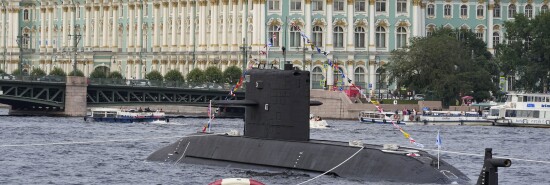
Why Ukraine’s attack on the Black Sea fleet is a problem for Russia
Tom Rogan
Video Embed
Ukraine has struck another major blow against Russian military power and Vladimir Putin’s credibility.
Launching U.K.-provided Storm Shadow cruise missiles against Russia’s Sevastopol-based Black Sea fleet in Crimea, Ukrainian forces severely damaged the Minsk landing ship and Rostov-on-Don Kilo-class attack submarine. Both ships were undergoing refits. Unverified satellite imagery appears to show catastrophic damage to both vessels, possibly of such a nature that it will be more affordable for Russia to scuttle the vessels than attempt to repair them.
TOOTHLESS US THREATS WON’T SCARE NORTH KOREA AWAY FROM RUSSIA COOPERATION
Seeing as the Sevastopol shipyards are supposedly defended by Russia’s best air defense systems, this attack is very embarrassing for Moscow. Russian forces say they shot down seven missiles during the attack, and even say that three missiles penetrated their air defenses. As with Ukrainian drone strikes inside Russia, these attacks portray Russia’s military as incompetent and Putin as weak. Indeed, if the boat can’t be repaired, this would be the first loss of a Russian submarine due to enemy action since World War II. The Rostov-on-Don would have cost Russia around $400 million to construct and, since its commissioning nine years ago, millions more to maintain.
Put simply, this is a big deal.
The nature of this action is also noteworthy in its deep symbolism. Sevastopol has, after all, long been a prized Russian possession and Moscow’s naval gateway to the Mediterranean Sea. But it’s also a city with a painful past. Sevastopol was lost to French and British forces following a brutal 1854-1855 siege during the Crimean War. It was also lost to the Nazis in 1942, though was resecured by the Red Army in 1944. This history blends with Putin’s imperial agenda to make Sevastopol and Crimea highly prized strategic possessions for the Kremlin. Smashing those possessions, Ukraine and the U.K. are showing a desire to further escalate their pressure on Moscow.
In turn, this attack underlines a continuing divergence between U.S. and U.K. military strategy in supporting Ukraine. As I’ve reported, the U.K. adopts greater risk tolerance in deciding what weapons systems to provide Ukraine and where to allow Ukraine to use those weapons. The U.K. military also adopts surveillance flights far closer to Crimea than does the U.S. military. It is unlikely, for example, that the U.S. would allow Ukraine to use American-provided weapons to conduct similar attacks in Crimea.
For Putin, however, this attack is a big problem. While Ukraine’s counteroffensive does not yet threaten to achieve its objective of dissecting Crimea from Russian forces in southeastern Ukraine, Russian land forces face escalating and systemic difficulties. Russian civilians in Crimea are not immune to these challenges: Putin’s Kerch Bridge link from Crimea to the Russian mainland is subject to frequent closures due to Ukrainian threats of attack.
Top line: With his prized Black Sea assets now on fire, Putin doesn’t look like the confident leader that his leadership narrative depends upon.
